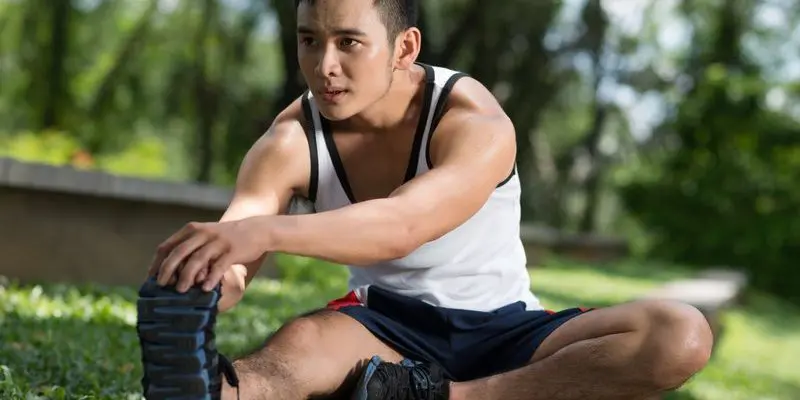
The best online fitness resource you'll ever need. We filter out the BS to ensure you meet your health and fitness goals!

The best online fitness resource you'll ever need. We filter out the BS to ensure you meet your health and fitness goals!

The Achilles tendon connects your two main calf muscles – the gastrocnemius and soleus – to the back of the heel bone. It comes into play in most athletic movements, as well as most day to day movement. Every time you point your toes, flex your foot or push yourself forwards in an explosive movement – for example, sprinting, diving, jumping, or cycling – you will be relying on and putting pressure through your Achilles tendon.
Achilles tendons are notoriously injury prone. Common injuries include tendonitis and rupture and can occur when the tendon isn’t strong or supple enough to cope with the demands it is put through. Years of overuse (or, alternatively, underuse), direct impact injuries and certain medications can contribute to Achilles tendon weakness and tightness.
Maintaining supple, flexible Achilles tendons will go a long way to warding off injury and improving athletic performance. It will also halt the development of flat-footed gaits that can harm the ankles, knees and hips over time.
With this in mind, let’s take a look at some simple, common ways of stretching out the Achilles tendons. You can do these as often as you like – daily, if it helps and you are able – and will find your foot motor patterns and calf function improving over time as your Achilles tendons begin to grow supple.
There are a few rules to bear in mind when stretching any muscle or tendon. As they are pretty tight – and if you’re reading this, yours are probably particularly tight! – you really need to pay attention to them when working on your Achilles tendons.
Keep these in mind and you should have supple, pain-free Achilles tendons in no time by simply trying out some of these stretches.
Toe raises should be your first port-of-call if you’re looking to stretch out your Achilles tendons and calf muscles. They are also pretty good at building strength and mass around your calves, which will go a long way to reducing the risk of injury in its own right.
To perform a toe raise:
You can perform the toe stretch on one leg at a time as an alternative. This will represent greater stimulation through your calves and will allow you to work both sides properly if one side is tighter than the other (quite common after injuries).
The ‘lean and lunge’ standing Achilles tendon stretch is something of a classic. It warms and stretches both the tendon itself and the soleus muscles, giving you length and suppleness through pretty much the full lower legs.
To perform a standing Achilles stretch:
To further isolate the Achilles tendon, aim for a deeper bend to the knee. Straightening the leg, on the other hand, will place the stretch more firmly in the calf.
If you struggle to sit on the floor with straight legs – as many people with short or tight hamstrings will do – place a cushion or rolled up yoga mat beneath your hips to tilt yourself slightly forwards. Alternatively, press your back against the wall to support yourself and consider keeping your knees slightly bent.
Try performing these individually from time to time, one foot at a time, especially if one Achilles tendon is tighter than the other.
People with short hamstrings, men especially, often find it difficult to sit on the floor without falling back. If this is you, you can either sit on a cushion to elevate your hips or press your back against the wall to support yourself. If one calf is tighter than the other, you can wrap a towel around each foot individually rather than both.
Also known as a ‘sitting egg stretch’, the heel sit can be pretty tough. It’s a more advanced move, incorporating a squat position. It makes use of your bodyweight, pushing downwards into the Achilles tendons as the calf muscles contract.
Heel sits are also a great strengthening and stabilising movement.
To perform a heel sit:
Perform these stretches regularly – especially after hard training like running or jumping – and you will benefit hugely. Your Achilles tendons and calves will be far safer and less injury prone, and will move more smoothly, with greater power output and stability.